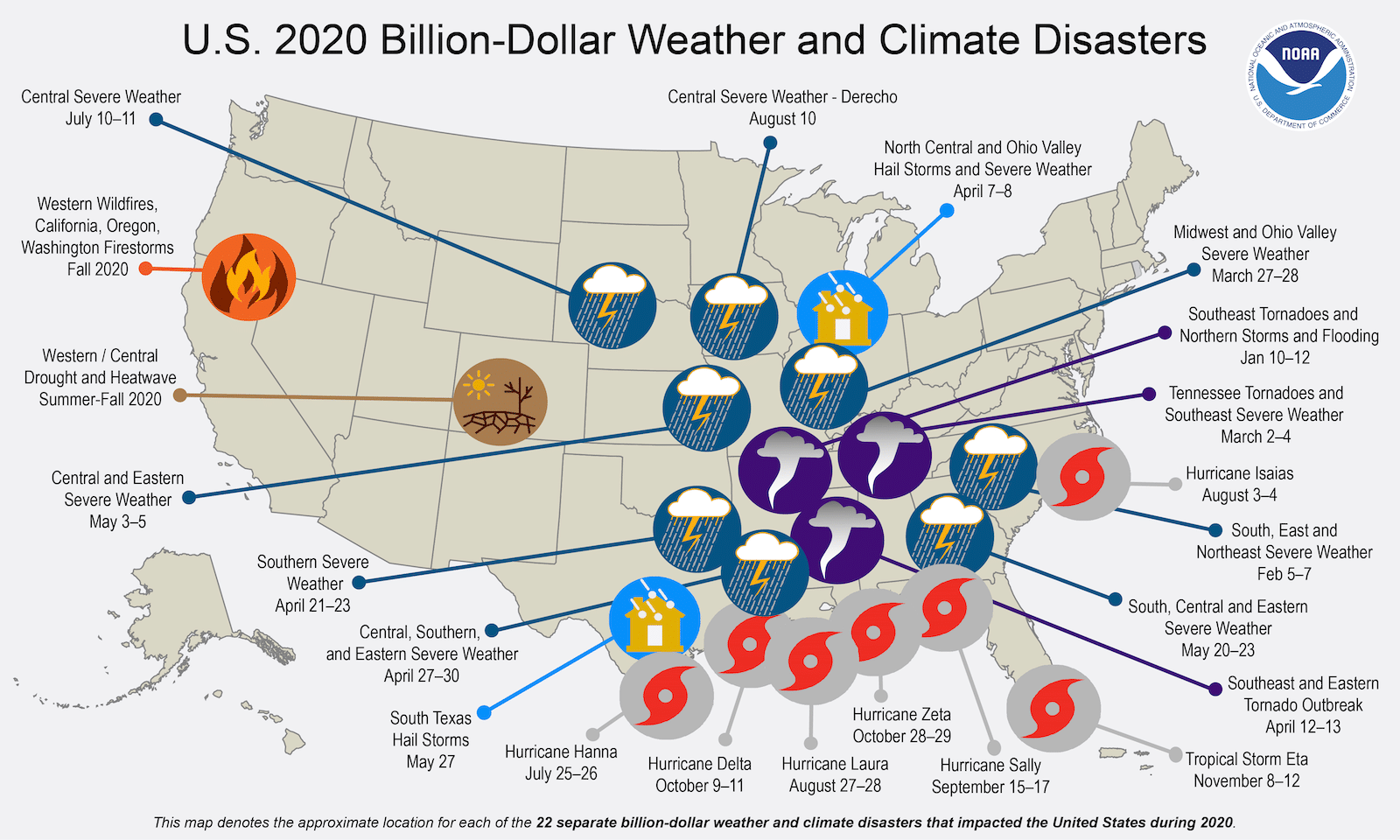
The National Oceanic and Atmospheric Administration (NOAA) released its annual National Climate Report today. Of note, it showed that 2020 had more climate disasters with a billion dollar price tag than any year since tracking began in 1980. There were 22 separate billion-dollar climate disasters in 2020, and the previous annual record was 16 such events in both 2011 and 2017. The billion-dollar climate disasters in 2020 included: 7 tropical cyclones, 13 severe storms, 1 drought, and 1 wildfire. The collective price tag of these events was $95 billion, which ranks as the fourth highest on record.
Of particular note to the Southeast was the tropical cyclone activity in 2020. There were 30 named tropical storms and hurricanes in 2020, which is an annual record. There were 13 hurricanes and 6 major hurricanes, which puts 2020 in second place for most number of hurricanes and major hurricanes since tracking began. The landfall of 12 storms in the U.S. breaks the annual record for landfall of named storms, and 6 of those storms were hurricanes, which ties the record for the most hurricane landfalls.
Additional billion-dollar climate disasters to hit the Southeast include the catastrophic Central Tennessee tornadoes in March that killed 25 people, the devastating tornado outbreak of Easter Sunday/Monday, flooding rains in early February, and storms in mid-May.
The climate disaster statistics of 2020 are part of an alarming trend revealing the cost of climate change caused by fossil fuel pollution: last year was the sixth consecutive year with 10 or more separate billion-dollar climate disasters in the U.S. The report also reveals that 2020 was the fifth-hottest year on record for the contiguous U.S., part of the warming trend evidenced by the fact that all five of the warmest years on record in the U.S. have occurred since 2012.
We must increase our efforts to reduce climate pollution so that disastrous years like 2020 cease being the norm.
